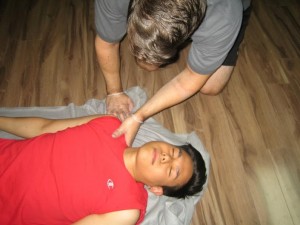With a number of CPR training providers opening all over the state, Seattle CPR still remains at the top of the list. We have a large number of trainees applying to our CPR courses each year because of the high quality and affordable fees. We have basic, advanced, and re-certification courses available all week, sometimes during the evenings and weekends as well to accommodate our trainees who have school or work.
Our most popular enrollment method is on the Seattle CPR website, with the online form. It can be filled out and submitted at any time of the day. If you cannot use or view the website, you may also send in your information through e-mail. Give us a call or visit in person during business hours to finalize your details.
CAD and atherosclerosis

Heart disease is the leading cause of death in the world, and kills more than 600,000 American men and women each year. Coronary artery disease is a kind of heart problem that is characterized by a build up of plaque in the vessels that supply the heart (coronary arteries). As time passes, the plaque hardens and builds up, blocking the flow of blood through the heart. The plaque also attacks other substances to the affected area, such as inflammatory cells, proteins, and even calcium, that further interrupt the flow of blood. This continual build-up is called atherosclerosis.
Complications of CAD
The most common complication of atherosclerosis is hypertension, especially if it occurs in the vessels that surround the heart. Because of the blockage, blood has a hard time travelling through our vessels, raising the blood pressure. If the pressure gets too high, the damaged parts of the vessel can rupture or the heart can become overworked. During a hypertensive crisis in a person that has CAD, he or she can get a heart attack.
Angina is also a common complication of this condition, particularly CAD. When the heart isn’t getting enough blood, the cells and tissues are not getting enough oxygen to function properly. This causes chest pain, usually manifesting during stressful situations and after certain activities. There are different kinds of angina, with the most dangerous being unstable angina – the kind that manifests randomly and does not go away with rest.
Getting CPR education
CPR training is quick and easy, and can save a life. Whether a person gets a heart attack in or out of the hospital, CPR is the first line management done by bystanders, EMTs, and health care professionals. The three core skills are taught in our basic CPR classes, with advanced classes expanded to include medical management. At Seattle CPR you will learn how to give chest compressions, ventilation, defibrillation, and even medication to victims of cardiac arrest.
- Basic CPR/AED (general public)
- Basic CPR/AED C
- Basic Life Support for HCPs*
- Advanced Cardiac Life Support*
- Pediatric Advanced Life Support*
*re-certification offered
